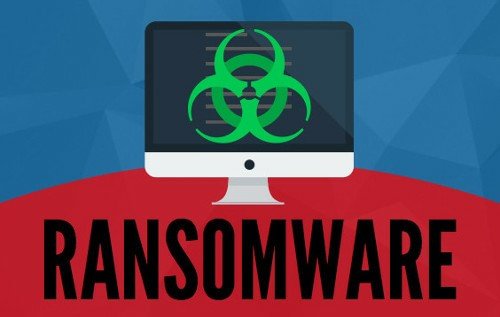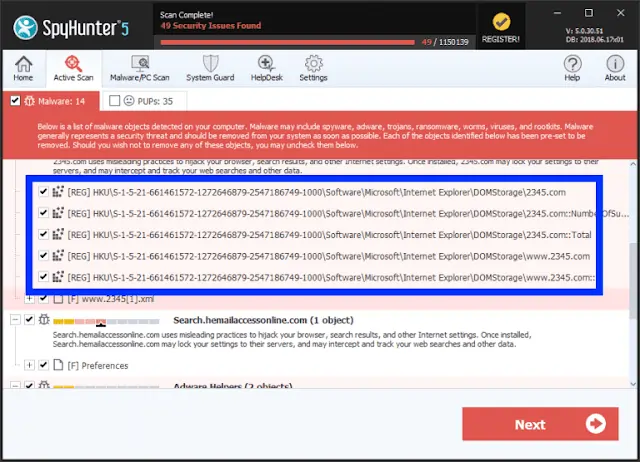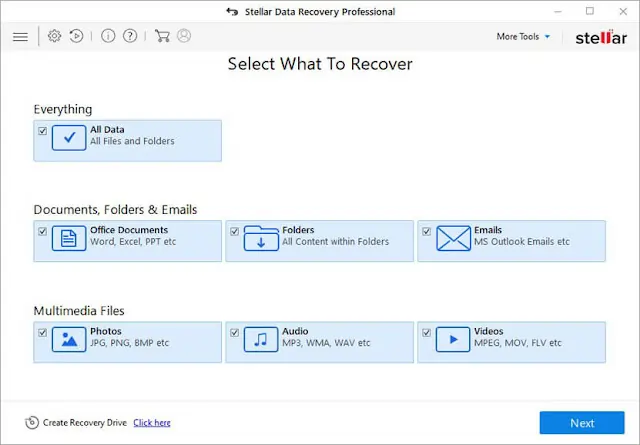Is your PC infected by BuLock File Virus Ransomware? Are you unable to access such converted files on your computer system? Is this Virus demanding ransom money to unlock your files? Actually, this nasty threat renames your files after encryption by appending the “.bulock16” extension. For example, if the file name “myphoto.png” got encrypted by this malware then it will get changed into “myphoto.png.bulock16” which is a locked file.
After encrypting all your files, a ransom note “#RECOVERY#.txt” is also dropped onto the desktop. That note contains ransom demand and decrypting tips. If you want to get rid of this infection and access your files without paying ransom money to hackers then read this guide carefully.

Threats like BuLock File Virus keep getting back on the PC if all associated files are not removed. So you are advised to use a powerful Malware Removal Tool to run a thorough scan of your PC and delete all threats at once.
Compatible with: Windows 11/10/8/7 (32 Bit and 64 Bit)
What is BuLock Ransomware
BuLock ransomware is a virus that encrypts files on victims’ computers and asks them to pay ransom money in return for the decryption key. This dubious threat is data locker malware, created by hackers to blackmail innocent users and make an illegal profit. It is capable of infecting any Windows PC very easily. It mostly intrudes on the targeted machine in disguise and users don’t even suspect the presence of this malware until their files are locked. This nasty BuLock Ransomware uses a powerful encryption algorithm to lock files on an infected computer which can only be unlocked by a private decryption key.

After encrypting files on the targeted machine, it appends the “.BuLock” file virus extension to the original file names. This is a way of marking files as inaccessible and the extension usually refers to the name of the virus. All the files encrypted by this virus can allegedly be opened by a decryption key which hackers are offering for a price. A ransom note is also left on the infected PC with instructions for how to pay ransom money, how much, and when to pay. Hackers usually demand ransom money through Bitcoin which cannot be tracked.
Working of bulock16 File Virus
Ransomware threats are created with the sole motive of making an illegal profit online. They cipher all the files stored on the infected PC whether it is a video, audio, picture, database, backup, or any other personal file type. Such viruses are capable of encrypting almost all types of files that normally users store on their computers. So if your system gets infected by Ransomware then all your files will still be there but you lose their access.
Every time you try to open your files, you will get an error. The only reason is that the extension of your files is changed. Now your system cannot decide the type of file and thus it cannot open the file for you. This BuLock File Virus uses a military-grade encryption algorithm that makes your files unreadable. According to the ransom note left on the compromised PC, buying a decryption key is the only way to restore those files in their original format.
BuLock Ransomware: Threat Analysis
| Name | BuLock File Virus |
| Type | Ransomware, File-Encrypting virus |
| Extension | .BuLock |
| Threat Level | High (Encrypt all your data and Restrict access to your files). |
| Symptoms | Victims cannot access any files on their PC and find Ransom notes asking for money. |
| Damage | It will encrypt your data by adding its extension to file names and demand ransom money for the decryption key |
| Distribution | It is mainly distributed through spam emails, bundled freeware, porn, or torrent sites. |
| Removal | Download SpyHunter 5 Anti-Malware |
| File Recovery | Download Data Recovery Software |
How BuLock Ransomware Infects Your PC
Cybercriminals use different methods to spread their creation online to target a mass audience. Spam email campaigns are one the most used methods to spread threats like BuLock File Virus on a massive level. Hackers create and send fake emails to a bunch of people using bulk emailing software. These emails often refer to famous companies, services, or legitimate offers that carry malicious attachments. Just by opening the mail and downloading the attachment, malware can be installed on the user’s computer. This virus could also be distributed via social media and file-sharing services.
Bundled freeware programs can also carry malicious attachments that can install harmful viruses on the system without permission. Downloading pirated software or fake software and patches could also bring harmful threats to the computer. Apart from this, clicking on misleading pop-up ads, alerts, banners, offers, etc. can redirect the browser to suspicious sites. Those websites could trigger the automatic download and installation of malware on load. You can find some important tips to prevent such malware attacks in the future at the end of this article, make sure to check them.
DO NOT Pay Ransom Money
Those behind this awful Ransomware attack only want to cheat your money. You are advised to not pay any money to hackers under any circumstances. The so-called alleged decryption of your encrypted files might only be a ruse. It is highly unlikely that the creators of BuLock File Virus will restore your files once they get paid. They will have no motive, no real reason for unlocking your files. Most Ransomware victims have reported such incidents where they got scammed by hackers and didn’t get the decryption key even after paying. This nasty ransomware can make changes to your system and can get back any time.
How to deal with BuLock File Virus
BuLock Ransomware is a dangerous computer malware that should be removed from infected computers. If you are thinking of paying then it’s a terrible idea. Formatting your PC or reinstalling Windows will also not remove this virus effectively and you will also not be able to recover your files. So you are advised to use a powerful Anti-Malware Tool to get rid of this Virus from your computer. You can recover your files through backup files. If you don’t have any backup of your data then you can use Data Recovery Software to restore the previous version of your files.
How To Remove BuLock File Virus
Follow this guide carefully to remove this virus completely from your system. Below you can find step-by-step instructions on how to effectively get rid of this nasty threat easily. Removal of threats like BuLock Virus is never easy, so we have simplified the process for you in several small steps.
Quick Summary of Removal Instructions:
- Automatic BuLock Virus Removal Guide
- How To Decrypt .BuLock Files
- Manual BuLock Virus Removal Guide
- Start PC in Safe Mode With Networking
- Kill Malicious Process From Task Manager
- Remove Virus From Windows Registry Editor
- Remove BuLock Virus via system restore
- Prevent BuLock Virus in Future
Please Bookmark This Page by pressing the {ctrl+D} button or print it out on paper before you start the removal process because you may need to restart your PC or browser.
Automatic BuLock Virus Removal Guide
It can be hectic to remove threats from an infected PC but the use of powerful Anti-Malware can make it quite easy. SpyHunter anti-malware can help you to remove Trojans, Ransomware, Spyware, Adware, PUPs, etc. easily. You can scan your system for BuLock virus and all other hidden threats at once. All you need to do is to download this software and run a new scan on your PC.
It will find all the threats and viruses in no time and save you lots of time and effort. This amazing software also provides 24X7 customer support and one-on-one Spyware HelpDesk support for Custom Malware removal. Advanced System Guard feature detects and removes threats in real time. It has a very User-Friendly Interface and regular Malware definition updates make it most effective against the latest attacks.
How SpyHunter 5 Anti-Malware Works
- You will begin by downloading the software on your system for which you have to click on the below download button.
Geek’s Recommendation
Threats like BuLock Virus keep getting back on the machine if all associated files are not removed. So you are advised to use a powerful Malware Removal Tool to run a thorough scan of your PC and delete all threats at once.
Compatible with: Windows 11/10/8/7 (32 Bit and 64 Bit)
- Once the software has been downloaded, double-click on SpyHunter-Installer.exe to install the Anti-Malware program on your PC and proceed with the setup.


- After installation, you will need to launch the Anti-Malware application. From the welcome screen click on the Start Scan Now button to initiate a new scan of your PC.

- Once the scanning process begins, it will take some time to run a thorough diagnostic of your PC and find all hidden threats and malware.

- Soon you will find a complete list of all the threats on your system screen. Then you will need to click on the Next button to delete all the viruses.

How To Decrypt .BuLock Files
As there is no BuLock ransomware decryptor available, you will need to use alternate options to restore your files. The first one is to use the backup. If you have created a backup of your important files then it is going to be quite easy. However, if you don’t have any backup files or they also got encrypted by the virus then you will have to try a data recovery software.
We recommend using Stellar Data Recovery software because it is a powerful and trusted data recovery software. Paying ransom money is not ideal because it will only motivate hackers to carry out more attacks. You can wait for any free decryptor to be launched but it can take forever. Download the free trial version of data recovery and scan your PC for files. It may be able to recover some of your files and save you lots of money.
- Click on the below download button to get started instantly with the data recovery process on your PC.
Download Data Recovery Software Now
- After the download click on the installer file and complete the software installation. Then launch the application and select the Data type to recover, and click the Next button.

- After the selection of data, you will need to select the location from where you want to recover data. Choose the location and then click on the Scan button.

- The software will take some time to scan your system. You will see a list of all the files that can be recovered. You can preview them or click on the Recover button to save them.

Manual BuLock Virus Removal Guide
Attention! For the safety of your system, please confirm a few things before you begin manual removal:
- You have done this before, which means you have experience in removing the virus manually;
- That you know your way around PC and all necessary processes and applications;
- You know about Registry entry and the Serious repercussions of any mistake;
- Make sure you can reverse any mistake made during virus removal.
If you don’t attain any of the above standards, then manual removal could be a very risky idea. It is most likely best for you to use the SpyHunter 5 Anti-Malware which is totally secure and efficient method.
Compatible with: Windows 11/10/8/7 (32 Bit and 64 Bit)
Start PC in safe mode with networking
- Click on the Windows and R keys together on your keyboard to open the Windows Run Box.
- Now you will need to type in MSConfig and then click the OK button.
- The System configuration settings box will appear on your computer screen.
- Click on the Boot tab, check the Safe Boot option, and select the network box,
- Finally, you will have to click on Apply and then press the OK button.

Kill Malicious Process From Task Manager
- Open the Windows Rub box again on your PC by pressing the Windows and R keys together on your keyboard.
- This time you will have to type in taskmgr and then click the OK button to open Windows Task Manager. Look for any unknown or malicious running on your system.
- Select the process which is taking lots of systems resources and then click on the End Task button.

Uninstall BuLock Virus from Control Panel
- Again you will need to open the Windows Run Box, so press the Windows and R keys together.
- This time you need to open the Windows Control Panel, so type in appwiz.cpl and then click the OK button.
- Programs and Features windows will appear on your computer screen with a list of all the installed applications.
- Now you need to look for any unknown or virus related program and then Uninstall it from your PC.

Remove BuLock Virus From Registry Editor
- Again open the Windows Run Box on your PC by using the Windows and R keys.
- To open the Windows Registry Editor, type in Regedit and click the OK button.
- Now you will have to find the virus related registry files and remove them.
- Press CTRL and F keys together on the keyboard to start a Find query.
- Type the virus name and click on Find Next button to find malicious entries and delete them.

Warning: Meddling with Windows Registry files might not be a good idea if you don’t have advanced knowledge about registry files. Deleting the wrong file can break down your entire system. Proceed at your own risk, or just skip this step. You can choose the Automatic Removal method and avoid all the problems.
Compatible with: Windows 11/10/8/7 (32 Bit and 64 Bit)
Remove Malicious IP addresses from Windows Hosts Files
- To open the Windows hosts file, simply press the Windows and R keys together on the keyboard.
- Type C:\Windows\System32\drivers\etc in Run Box and then click the OK button.
- Now you will need to access the Windows hosts file using Notepad.
- Most threats add malicious IP addresses here to automatically connect to remote servers.
- Delete all the malicious IP addresses below the localhost and save the file.

Delete Virus related files from your PC
When malware infects your system, it normally creates several malicious files and spread them at different locations. After you remove the malware, these leftover files help them to get back to your computer. Remove all virus related files at once by following the below instruction :
- Open the Windows Run Box again by using the Windows and R keys together.
- Now you will open the below paths one by one using the Run Box and remove malicious files.
- %AppData%
- %LocalAppData%
- %ProgramData%
- %WinDir%
- %Temp%
For the first four options, look for any recent folder related to the BuLock File Virus and remove them. For the Temp folder, you can delete all the files at once. Use Ctrl, Shift, and Delete keys together for permanent removal.
Remove BuLock Virus via system restore
- You will again need the Windows Run Box, so press the Windows and R keys together.
- Open the Command Prompt by typing in cmd and then clicking the OK button.
- Type cd restore and press Enter, then type rstrui.exe and press Enter.
- The System Restore window will get opened instantly then click on the Next button.
- Choose a System Restore point you have created in the past and click the Next button.
- Finally, when you will hit the Yes button, the system restoration process with start immediately.

Note: System restore to remove a virus will only work if you have a restore point set on your PC. Otherwise, no changes will be made to your system and it will not remove any threats. Be advised, restoring the computer to a previous version does not always guarantee virus removal. Most viruses delete restore points, so don’t get disappointed if this trick does not work for you.
Prevent BuLock Virus in Future
- Get a powerful Anti-Malware or Anti-virus to fight cyber threats. Free versions do not offer the best protection and cracked security programs can do more damage than good.
- Always keep your Windows firewall active, and your OS updated along with other important programs. Only download updates from official sites or reliable sources.
- Check HTTPS before entering your email, password, credit card details, etc. into any site. Do not visit sites that do not have SSL security. Also, don’t forget to Enable Phishing and Malware protection in Browser.
- Do not download or install any type of pirated software, games, or illegal patches. Avoid using shady sites to acquire freeware programs because they often use software bundling. Never install a program that asks you to inactivate your anti-virus software.
- Avoid opening spam emails from unknown senders. Always scan all the email attachments before opening them. Never click on any suspicious links with some too good to be true offers.
- Connecting your PC or mobile devices to unsafe public Wi-Fi is not a good idea. You can also avoid unwanted threats coming from malicious sites by using a VPN to spoof your connection.
- Keep regular backups of all your important data on external hard drives or cloud drives to avoid data loss in case of a ransomware attack. Also, create a system restore point on your system for security purposes.

Leave a Comment